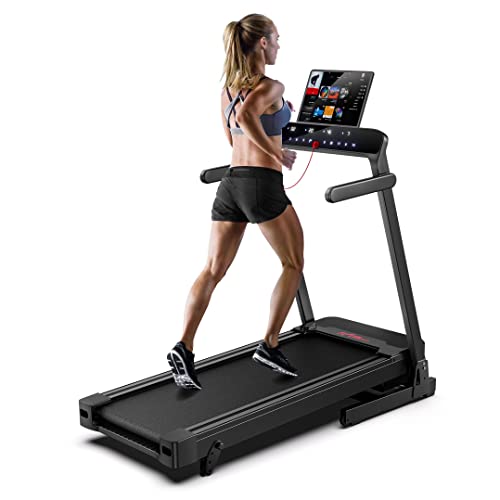Treadmills: A Comprehensive Guide to Understanding Their Functionality, Benefits, and Appropriate Selection
Introduction
Treadmills have become a staple in contemporary physical fitness routines, both in homes and health clubs worldwide. They provide a convenient and effective way to keep cardiovascular health, increase endurance, and help in weight management. This short article checks out the various kinds of treadmills, their advantages, functions to consider when buying, and some FAQs to direct users in making notified choices.
Types of Treadmills
When it concerns picking a treadmill, it is essential to understand the different types readily available in the market. Here are the main categories:
1. Handbook Treadmills
- System: These treadmills have a simple style and count on the user's efforts to move the belt.
- Pros: More budget friendly, quieter operation, no electrical energy required.
- Cons: Limited features, may not offer the exact same series of exercise intensity.
2. Motorized Treadmills
- Mechanism: Powered by a motor that drives the belt, enabling users to stroll or perform at a set rate.
- Pros: Greater range of speeds and slopes, equipped with numerous features such as heart rate monitors and exercise programs.
- Cons: More expensive and may need more maintenance.
3. Folding Treadmills
- Mechanism: Designed for those with restricted area, these treadmills can be folded for easy storage.
- Pros: Space-saving, typically motorized, versatile functions.
- Cons: May be less long lasting than non-folding models.
4. Commercial Treadmills
- Mechanism: High-quality machines designed for usage in health clubs and fitness centers.
- Pros: Built to hold up against heavy usage, advanced features, typically include guarantees.
- Cons: Pricey and not ideal for home use due to size.
5. Curved Treadmills
- System: A distinct style that permits users to propel the belt using their own energy.
- Pros: Offers a more natural running experience, promotes better running kind.
- Cons: More costly and can be noisier.
| Treadmill Type | Pros | Cons |
|---|---|---|
| Manual | Inexpensive, no electricity required | Minimal features |
| Motorized | Variety of speeds, advanced functions | Maintenance required |
| Folding | Space-saving, typically motorized | May lack toughness |
| Industrial | Constructed to last, professional-grade features | Pricey |
| Curved | Natural running experience, promotes great kind | Higher price |
Benefits of Using Treadmills
Treadmills use various advantages that can add to one's general health and wellness goals. Some of these advantages include:
- Convenient Workouts: Treadmills enable users to work out inside your home regardless of weather.
- Cardiovascular Health: Regular usage can enhance heart health by increasing stamina and promoting healthy circulation.
- Weight Management: Effective for burning calories, which helps in weight reduction and management.
- Personalized Workouts: Users can control speed, slope, and period to create tailored exercise experiences.
- Safety: Treadmills provide a foreseeable surface area, lowering the risk of falls compared to outdoor running.
- Multifunctional: Many treadmills come with features like heart rate monitors, exercise programs, and even home entertainment systems.
Choosing the Right Treadmill
When picking a treadmill, possible purchasers need to consider several key aspects:
Features to Consider:
- Motor Power: Typically determined in horsepower (HP), a motor strength of a minimum of 2.5 HP is suggested for major runners.
- Belt Size: A longer and wider belt accommodates numerous stride lengths, providing convenience during workouts.
- Slope Settings: Adjustable slope features simulate outside hill running and can increase workout strength.
- Weight Capacity: Ensure the treadmill can support the user's weight for safety and durability.
- Console Features: Look for user-friendly dashboards, exercise programs, and Bluetooth compatibility for streaming music or other functions.
Budget plan Considerations
- Under ₤ 500: Entry-level manual treadmills appropriate for casual walkers.
- ₤ 500 - ₤ 1,500: Mid-range motorized treadmills that offer more functions and much better sturdiness.
- ₤ 1,500 - ₤ 3,000: High-end models with innovative technology, bigger motors, and longer guarantees.
- Over ₤ 3,000: Commercial-grade treadmills perfect for frequent use in health clubs or training centers.
Often Asked Questions (FAQs)
1. How typically should I utilize a treadmill?
It is recommended to use a treadmill a minimum of three to five times a week, incorporating numerous intensity levels for best outcomes.
2. Can I reduce weight by utilizing a treadmill?
Yes, consistent use of a treadmill can contribute to weight loss, specifically when integrated with a balanced diet plan and strength training.
3. What is the best speed to walk on a treadmill for novices?
A speed of 3 to 4 miles per hour is an ideal range for newbies. It's necessary to start sluggish and gradually increase pace as convenience and endurance improve.
4. Do I need to use a treadmill if I currently run outdoors?
Utilizing a treadmill can supply fringe benefits, such as controlled environments and varied workouts (slope, periods) that are not always possible outdoors.
5. How do I keep my treadmill?
Routine maintenance consists of lubing the belt, cleaning the deck and console, and checking the motor for optimal efficiency.
Treadmills are vital tools for those looking to boost their fitness levels in a regulated and convenient manner. With This Resource site , understanding their features and advantages is essential for making a notified purchase. By considering individual workout requirements, area availability, and budget constraints, individuals can find the most suitable treadmill that fits their way of life. Integrating treadmill exercises into a well balanced physical fitness routine can result in better health results and a pleasurable exercise experience.

